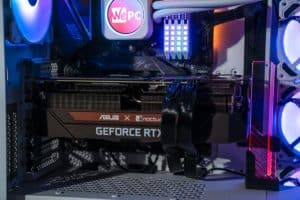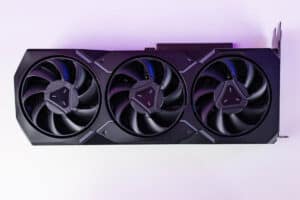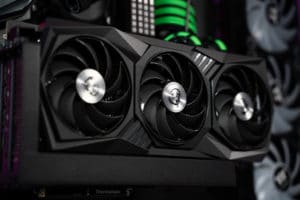AMD vs Nvidia graphics cards (GPUs) in 2024
There is fierce competition and even more along the way so its best to keep eyes on it
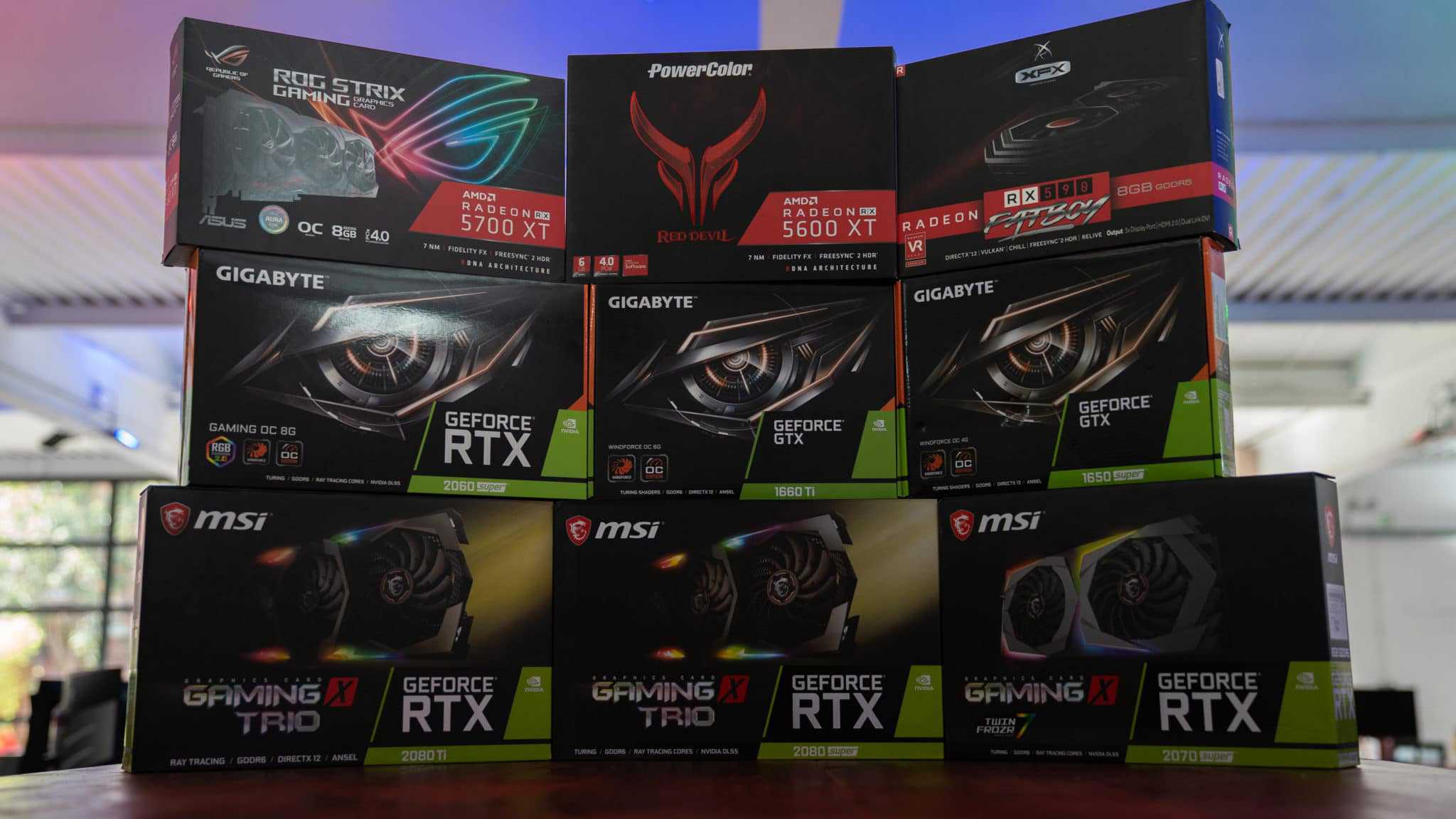
WePC is reader-supported. When you buy through links on our site, we may earn an affiliate commission. Prices subject to change. Learn more
AMD and Nvidia are the biggest names in gaming, PC gaming that is, but that’s not to say they don’t have a hand in consoles too. In this article, we’re going to go through all you need to know about these tech giants and who comes out on top. AMD vs. Nvidia, which side are you on? Without further ado, let’s find out who manufactures the best graphics cards.
What is AMD?
AMD, or Advanced Micro Devices, is the second-biggest name in the world of personal computing. Serving as Intel’s singular rival in the CPU market, both are continually pushing the limits of x86 and x64 processors across the industry, with the launch of Ryzen bringing AMD back into the competition. This is a battle that’s been going on for decades, and it is looking as heated as ever.
So, where do graphics come into it? Well, that is where Radeon enters the picture.
What is AMD’s Radeon?
Radeon started as an ATI brand, not an AMD brand. ATI, or Array Technology Inc., served as Nvidia’s chief rival in the PC graphics space from the ’90s to the mid-’00s, so initially, it was Nvidia vs. ATI. In 2006, AMD acquired ATI and the Radeon brand was created. The newly-branded AMD Radeon became Nvidia GeForce’s competitor, making AMD the smaller rival in both the CPU and GPU markets.
Radeon GPUs are consumer-oriented gaming graphics cards. In recent years, they are branded with R3, R5, R9, and RX variations. Each upgrade improves its performance just like it is doing in the CPU area.
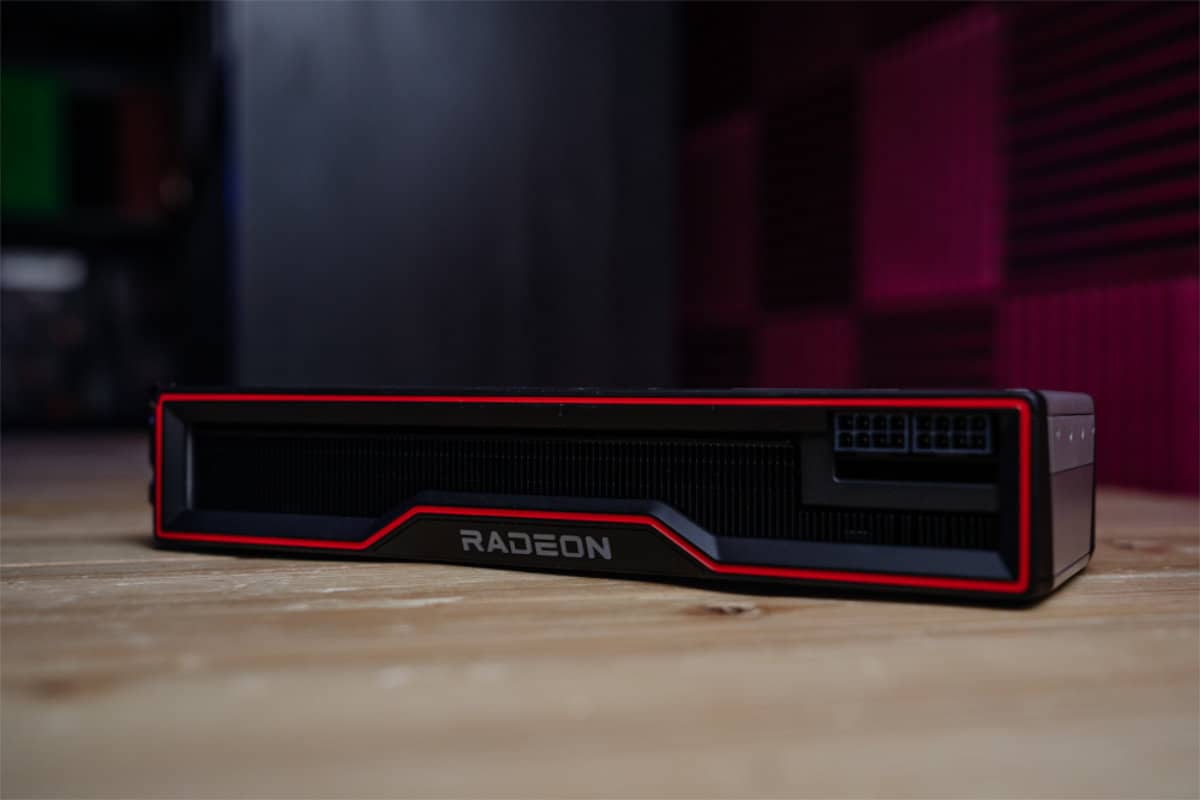
What is Nvidia?
Nvidia emerged in the 90s as one of many competitors in PC graphics, alongside 3DFX and ATI. While the GPU wars of the 90s were an interesting time, they led to many acquisitions and bankruptcies until only two competitors remained: Nvidia and ATI.
We obviously know what happened to ATI, but since then, Nvidia has steadily climbed the market. Transitioning into the PS3/360 eras, they acquired market dominance over ATI just before AMD acquired them.
In addition to PC graphics, however, Nvidia is also making itself known in other markets, most notably, self-driving cars and AI. While both companies are interested in the mobile and console markets, Nvidia has grown more adventurous with its non-graphics outings, likely due to its position in the market.
What is Nvidia’s GeForce?
GeForce is simply the brand that Nvidia uses for its graphics cards. Unlike with AMD, there isn’t really a story behind the brand name here.
GeForce GPUs are branded with GT, GTX, and RTX.
The competition so far
Since the merging of ATI and AMD, Nvidia and AMD have been the last remaining discrete GPU manufacturers for the PC gaming market. Until Intel ARC entered the market more recently as another attempt to offer an alternative. Much like AMD’s standing with Intel in the CPU market, they occupy a much smaller portion of the market overall and are generally seen as the underdogs.
Make no mistake: AMD definitely has a lot less money than Nvidia does. Nvidia’s cash pool allows for the more frequent creation of new GPU architectures and diversification in areas like self-driving cars and AI. With the debut of the SHIELD hardware, Nvidia has even made a big move into mobile technologies that AMD has yet to mirror.
Gaming-wise, both companies have played prominent parts in the console wars. The Xbox 360 and Nintendo Wii both packed ATI (AMD) GPUs, while the PlayStation 3 was made using a modified Nvidia GPU. In the current generation of consoles, AMD has manufactured custom APU/SoCs for both PS4 and Xbox One and even the PS5 and Xbox Series consoles. While Nvidia has adapted its SHIELD tech for usage with the Nintendo Switch.
Economically and overall, Nvidia is probably winning. However, AMD is unlikely to go anywhere anytime soon, and if you look at their actual GPU offerings, the two are a lot more competitive than you might think. With frequent price and performance wars across multiple generations, you can pretty much assume that while Nvidia will always rule the highest tier of performance, AMD will put up one hell of a fight in the budget and midrange.
AMD Vs. Nvidia: The syncs and software
Before we compare the hardware, let’s take a moment to talk about Sync technologies and software offerings.
Nvidia’s G-Sync vs. AMD’s FreeSync
Fundamentally, the two technologies are trying to do the same thing: remove screen-tearing from the equation, ensure consistent frame pacing, and provide an overall smoother gaming experience. They do this through a technology called “Adaptive-Sync,” which dynamically adjusts the refresh rate of a monitor to match the current framerate of what you’re playing. This makes lower average framerates smoother to play with, and helps alleviate the screen tearing that often comes with higher framerates, without the input latency that comes with V-Sync.
In general, both will do great, but Nvidia’s implementation is more expensive since it requires dedicated hardware inside of the monitor to function. FreeSync, by comparison, only needs an up-to-date DisplayPort port and supported AMD GPU to function properly.
Software
In terms of overall software offerings, Nvidia used to have a fairly significant advantage here. Nowadays, if there’s an Nvidia feature like Share/Shadowplay, then AMD has it matched. There are still games that come out with specific optimizations and graphical effects for one of the two manufacturers. Still, these have become much rarer over time due to negative reception and perceived anti-competitive behavior.
Even implementations of upscaling have been fairly equal. Although Nvidia keeps its DLSS proprietary and working quite well. Focused on the final product it tends to only work on RTX cards. With DLSS 3 more specifically for the RTX 4000 series cards.
Whereas AMD’s FSR is more open-source. Available to game developers to implement and help out the users. It also has been improving but has been known for lower-quality images. It also has its own driver version with RSR, that can apply to any game where you downscale below your display resolution.
AMD Vs. Nvidia: The matchup
We’re going to put these two GPU manufacturers up against each other in five key price ranges. In addition to performance, we’ll also be considering value, so raw graphical horsepower won’t ensure wins in each category if it comes at a severe cost to value.
AMD vs Nvidia – The enthusiast
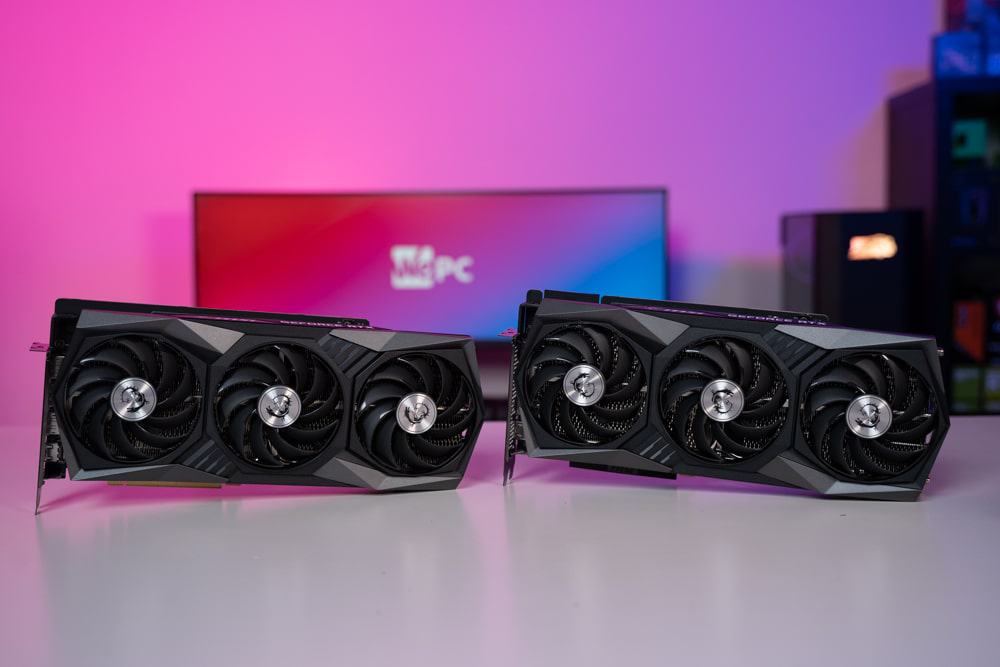
The competitors
In the Enthusiast tier, we took the top two cards of the competition in the previous gen whilst we wait for the newest gen to fully compete.
Nvidia’s latest flagship GPU, in many ways, is one of the best all-around cards we have ever seen, with it smashing previous-gen Nvidia cards. With the RTX 3090 Ti founders edition being the largest card ever to grace our PCs, at the time, you are going to need to ensure you have the clearance and case compatibility from the get-go.
You are also going to need a beefy power supply, with this card requiring a 12-pin connector and consuming 350 watts of power. Lastly, to make use of this card’s power you are going to need to pair it with the fastest gaming processor on the market. This isn’t a cheap card, oh no, and for that price, you are going to be getting more than double the video memory when compared to the RTX 3080, not to mention faster.
Thanks to this expansive VRAM, the RTX 3090 Ti now features more compute capabilities and an enhanced ability with rendering complex 3D scenes. Furthermore, 24GB of memory is needed to support gaming in 8K. As well as higher CUDA core counts and additional cores inside the die.
Whilst the RX 6950 XT offers a bit more of an affordable option right at the top end. It comes in at nearly half the MSRP of the 3090 Ti. As it launched for $1,099 compared to the $1,999 pricing. So it’s certainly a win when trying to buy one.
However, comparing them there is certainly a performance discrepancy between them. At 1080p and 1440p, the AMD card does in fact take the win and can outperform the bigger card. However, at 4k it does then lose out, with a slower and lower capacity VRAM. Although it will still be a good performance.
Another drawback of AMD will be its rendering and ray tracing performance. They fall behind Nvidia and so if you need encoding and rendering time-saving is something to consider. As well as if you’re really keen on great lighting the performance is much worse on the AMD card.
Winner: RX 6950 XT
MSI Radeon RX 6950 XT GAMING X TRIO
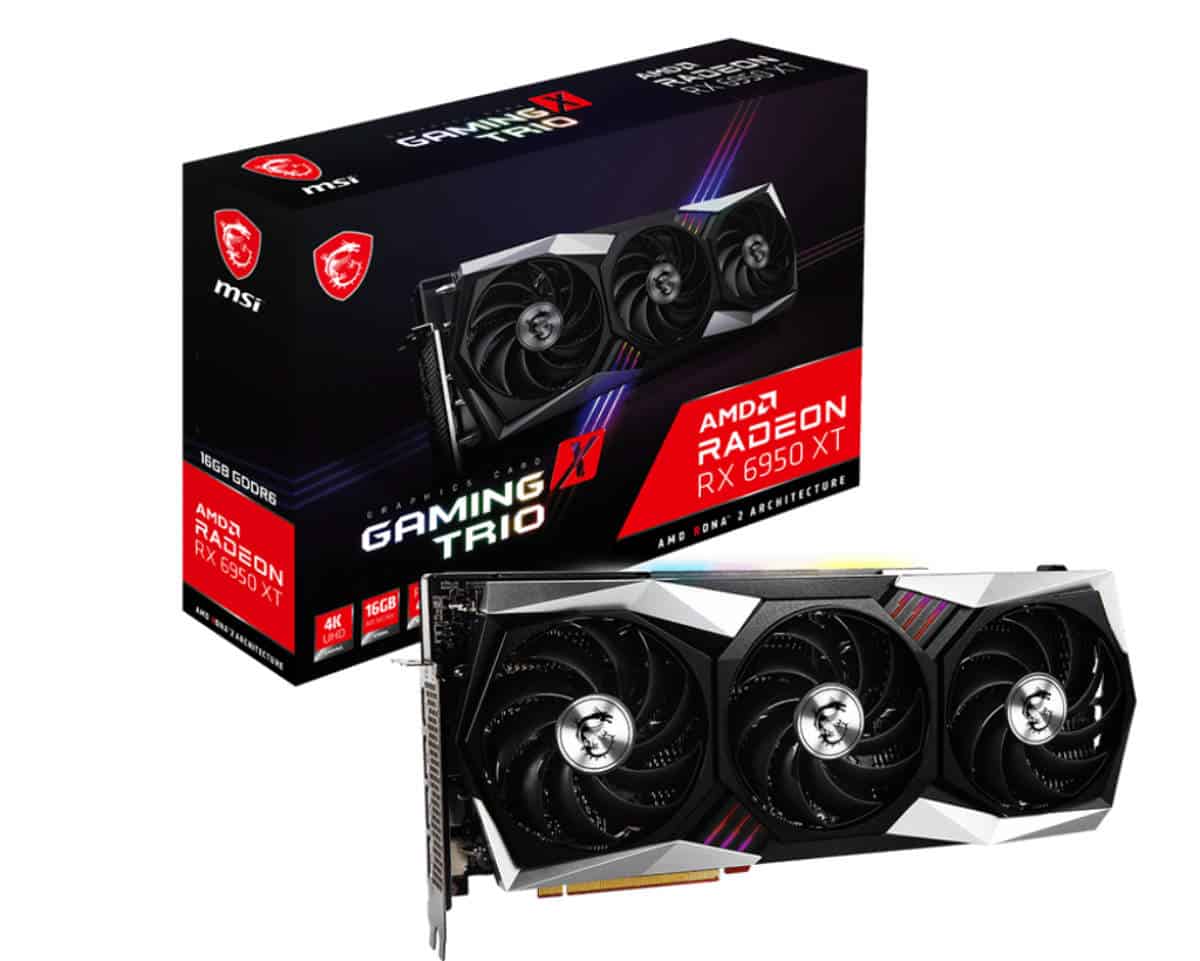
Core Clock Speed
1,925MHz base, 2,454MHz boost, 2,244 game
Stream Processors
5,120
Memory Size
16GB GDDR6
Dimensions
325 x 140 x 55 mm
PSU Required
850W
AMD Vs. Nvidia – The High-End
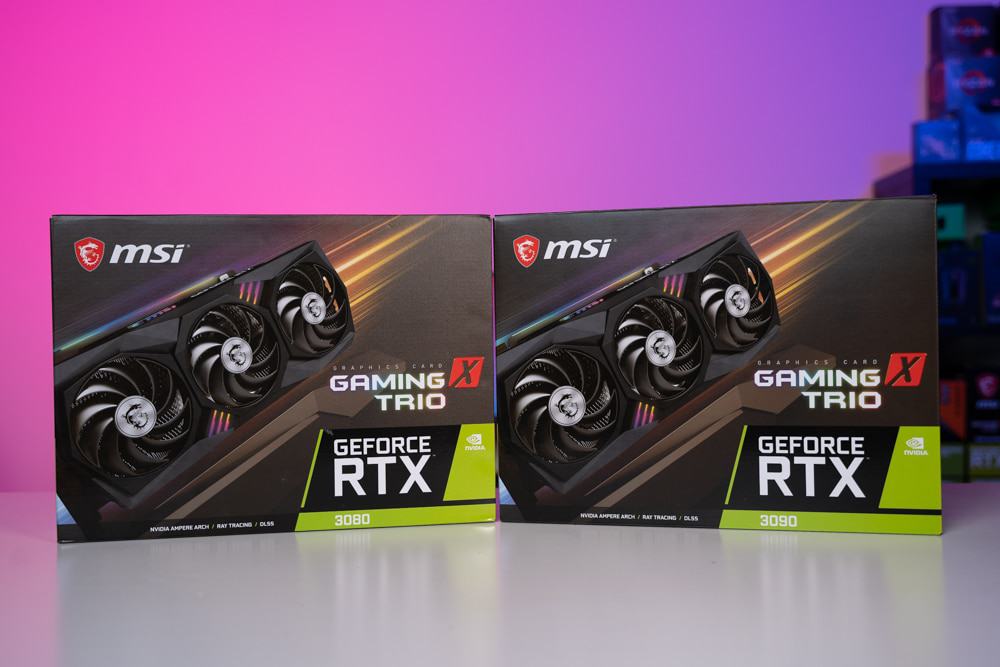
The competitors
Beneath the absurd performance levels of the RTX 3090, the battle quietens down with the RTX 3080 having no equal at this price point. Now, unfortunately, the actual performance wasn’t quite as groundbreaking as the announcement had us believe but this is one of the fastest graphics cards to ever grace the shelves.
Considering its price matches the previous generation RTX 2080, it is a must-have for any high-end PC build. Benchmarks indicate significant results in favor of the brilliant RTX 3080, with this featuring a performance lead over the last gens 2080 and 2080 Ti, across a multitude of AAA games in 1440p.
This card offers anything from a 20 to 70% uplift over 2080 but we saw even more impressive results when looking into 4K gaming. With the RTX 3080, Nvidia has changed the game and given general gamers, prosumers, and even some professionals, that are looking to build affordable and powerful gaming rigs or workstations a fantastic solution.
For raw performance, future tech such as ray tracing, and excellent FPS counts, the RTX 3080 is the way to go and wins this category with ease.
On the level of the 3080, AMD has the RX 6800 XT. Although the performance of the card is great in itself, all the other parts around it don’t hold up enough. With creator workloads lacking behind that can be of importance to some. And both the MSRPs of them are not too far off so you can get a bit for your pick with the Nvidia card.
Winner: RTX 3080
ASUS TUF Gaming Nvidia GeForce RTX 3080 OC
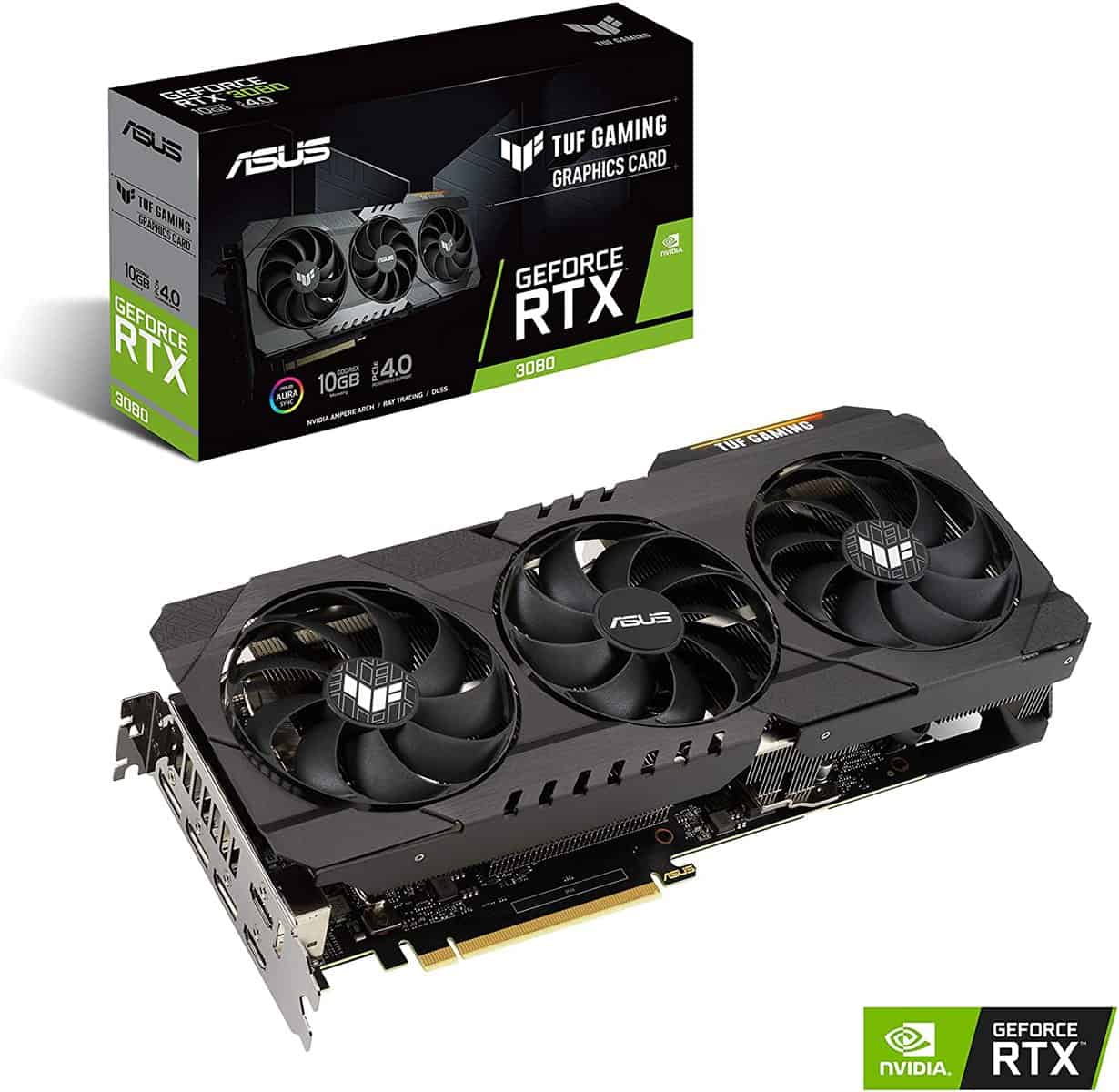
Clock Speed
1815MHz Boost Clock (OC)
VRAM
10GB GDDRX
Thermal Design
Axial-tech Triple Fan
AMD vs. Nvidia – The mid-range
The competitors
Now for the mid-range, there is a variety of choices depending on what you may classify in that area. But with the selection of the RX 6650 XT and RTX 3060 Ti you get a good balance of price to performance. As both the cards were released at an MSRP of $399 USD.
Whilst they both can work well at 1080p and 1440p resolutions. As they average over 100 FPS at 1080p, and into the 70s and 80s at 1440p. Pushing 4k is a stretch for both of the graphics cards but it is the 3060 Ti that takes the small lead in the performance.
Being the Nvidia card, it also has the benefit of hardware and drivers. This means a much-improved rendering and encoding performance over the current AMD architecture.
So at the same price point, the slight advantage does give the Nvidia card the edge. So it’s the better pick, as long as you can find yourself one these days.
Winner: RTX 3060 Ti
ASUS GeForce RTX 3060 TI ROG Strix Gaming OC
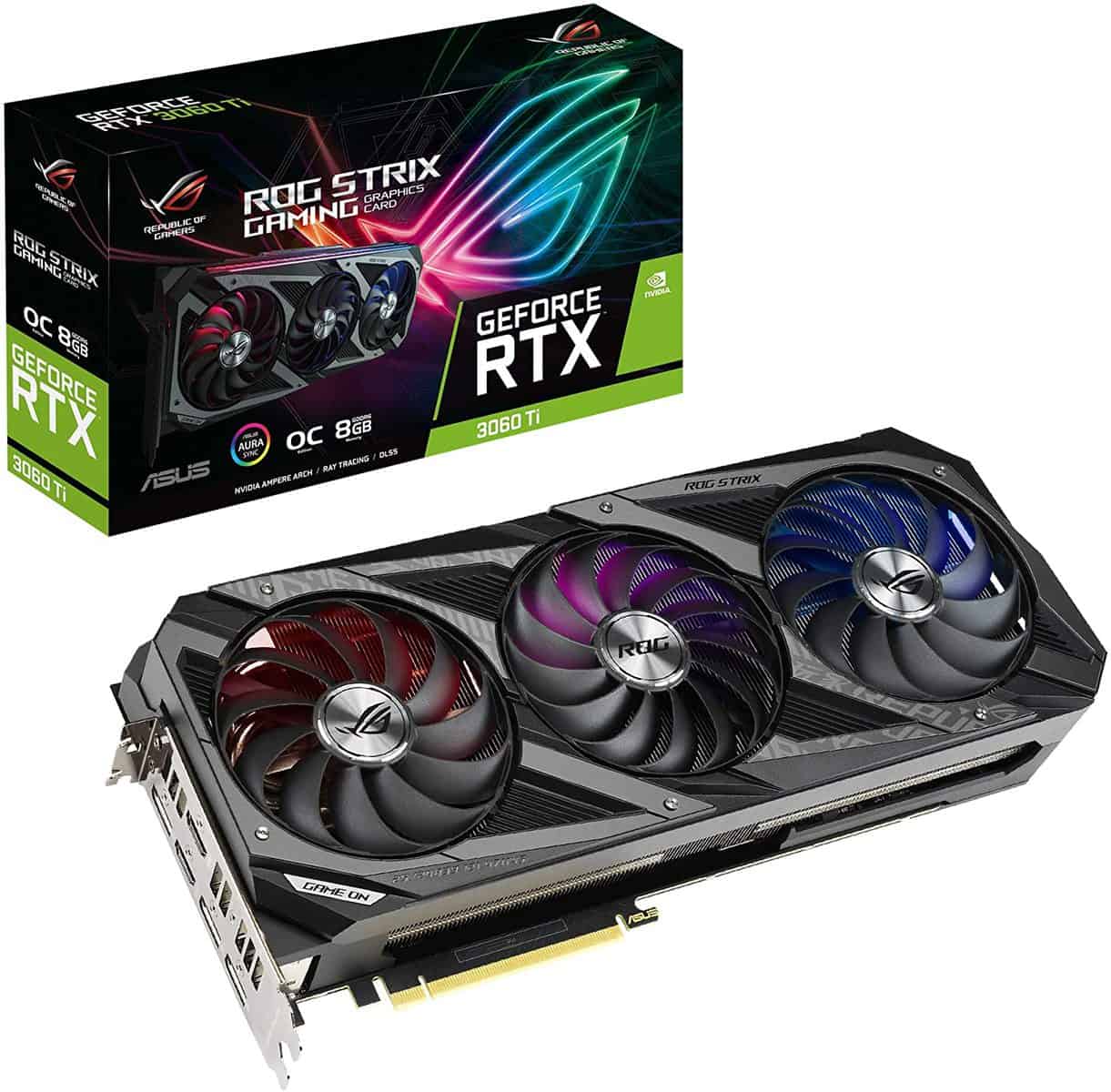
Core Clock Speed
1890MHz Boost Clock (OC)
Cuda Cores
4,864
Memory
8GB GDDR6
Dimensions
318 mm x 140 mm x 57 mm
PSU required
750W
TBP
Axial-tech Triple Fan
AMD vs. Nvidia – The budget range
The competitors
The GTX 1060 dominated this category for a long time, but then the GTX 1660 Super came along. Nvidia was unchallenged by AMD in this category for quite some time but AMD bridged the gap with their Radeon 5600 XT GPU.
While the Radeon 5600XT boasts better performance overall, it is only by around 10-15%, which is also reflected in the price. So you may spend a bit more but it would be worth it to edge out the extra on top.
Winner: RX 5600 XT
MSI Gaming Radeon RX 5600 XT
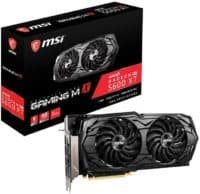
Game Clock Speed
1620 MHz
VRAM
6GB GDDR6
Memory Bus Width
192 bit
Who wins overall?
The winners ultimately depend on your individual needs as a gamer. In a few of the categories, raw performance has lost out to excellent value, so take each result with a pinch of salt.
Despite this, it is clear that Nvidia is the standout winner in the graphics card market, with superior high-end graphics cards for enthusiasts and gamers. Nvidia came out as the winner across most categories we outlined above despite AMD’s forward strides in the GPU market. While the RX series produces some fantastic performance, they can only compete with Nvidia’s mid-range graphics cards.
When we look at who is winning from a value standpoint, AMD is smashing the competition with multiple options to cater to various low-end budgets. Bang for your buck is important to many, and with the decreasing prices of the RX 580 and 570, it’s now even easier to build a capable machine for less.
AMD and Nvidia will always be competing. AMD may be depicted as an industry underdog in both CPU and GPU manufacturing. Still, the fact is they’re quite profitable, and their presence helps prevent Intel and Nvidia from stagnating prices and performance. We don’t recommend buying on company loyalty, but as long as AMD is providing competitive options in your price range, you should consider buying from them.









